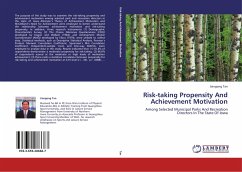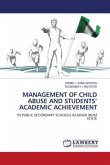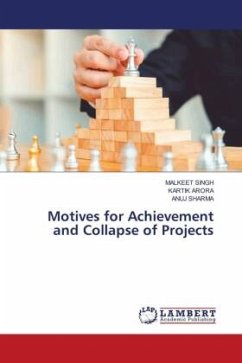The purpose of the study was to examine the risk-taking propensity and achievement motivation among selected park and recreation directors in the state of Iowa. Atkinson s Theory of Achievement Motivation and McClelland s Need for Achievement were employed to better understand the relationship between achievement motivation and risk-taking propensity. In addition, three research instruments (1) Demographic Characteristics Survey, (2) The Choice Dilemmas Questionnaire (CDQ) developed by Kogan and Wallach (1964), and Achievement Motive Questionnaire (AMQ) developed by Elizur (1979), were utilized to collect data. Statistical methods, such as Descriptive Statistical Analysis, Pearson s Product Moment Correlation Coefficient, Spearman s Rho Correlation Coefficient, Independent-sample t-test, and One-way ANOVA, were employed to analyze data in this study. Results indicated that: (1) 81.4% of respondents demonstrate a moderate propensity for risk-taking; (2) 96.6% of respondents scoredat the moderate or high levels of motivation achievement; (3) there exists a statistical correlation between propensity for risk-taking and achievement motivation at 0.01 level (r= .341, p= .0008); ...
Hinweis: Dieser Artikel kann nur an eine deutsche Lieferadresse ausgeliefert werden.
Hinweis: Dieser Artikel kann nur an eine deutsche Lieferadresse ausgeliefert werden.








